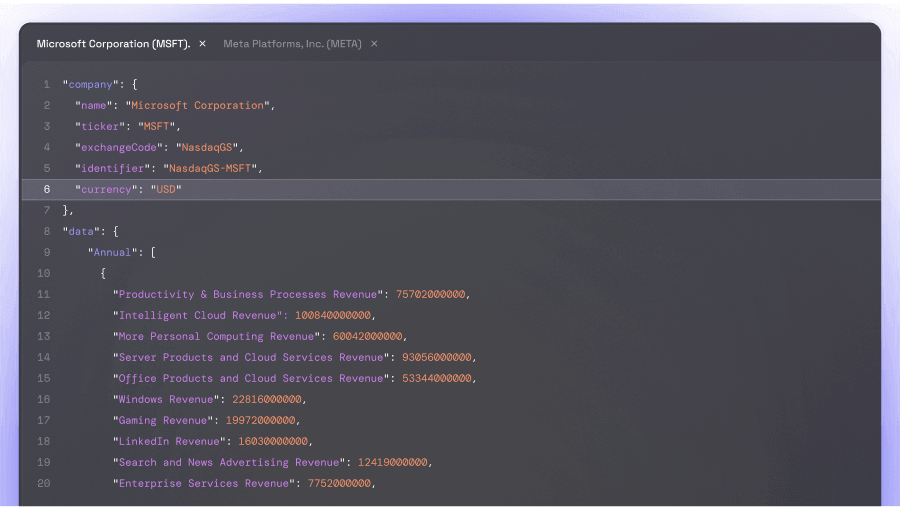Transferable Loan Instruments (TLI) Definition
Das Eulerpool Wirtschaftslexikon definiert den Begriff Transferable Loan Instruments (TLI) für Deutschland.
Transferable Loan Instruments (TLI) - Definition and Explanation Transferable Loan Instruments (TLI), in German known as Übertragbare Kreditinstrumente (UKI), are financial products that represent the ownership rights to a loan or debt obligation.
TLIs are primarily used in the capital markets to provide investors with the opportunity to trade loans and debt instruments, providing liquidity and diversification options. TLIs are usually issued by financial institutions, governments, or corporations seeking to raise capital by borrowing funds from investors. These instruments offer a fixed income stream, including interest payments and the return of principal, over a predetermined period. However, unlike traditional loans, TLIs can be freely bought and sold in secondary markets, meaning investors have the ability to transfer their ownership to other parties. One key advantage of TLIs is that they provide flexibility to investors who prefer to hold shorter-term loan assets but still desire the security and fixed income associated with longer-term loans. This flexibility allows investors to adapt to changing market conditions and optimize their portfolios accordingly. TLIs can take various forms, including loans traded on exchanges, loan participation notes, loan-linked notes, and debt securities collateralized by loans or loan portfolios. These instruments can be structured as both secured and unsecured loans, depending on the underlying asset and the risk preferences of the investor. For a TLI to be considered transferable, it must meet certain criteria. The loan agreement or contract must explicitly state that the instrument is transferable, and the necessary legal requirements must be fulfilled to ensure the transferability is valid under applicable laws and regulations. Investing in TLIs can offer distinct advantages for investors looking to diversify their portfolios beyond traditional equity and fixed income securities. By investing in TLIs, investors can gain exposure to various sectors, industries, and regions, providing a level of diversification that can help reduce overall risk. Additionally, TLIs can provide a stable income stream and potential capital appreciation opportunities. TLIs have gained popularity with institutional investors, such as banks, hedge funds, and asset management firms, due to the potential for high yields and the ability to access a wide range of loan assets. Retail investors can also access TLIs through various investment vehicles, including mutual funds, exchange-traded funds (ETFs), and structured products. In conclusion, Transferable Loan Instruments (Übertragbare Kreditinstrumente - UKI) are vital components of the capital markets, allowing investors to trade and transfer ownership rights to loans and debt obligations. With their potential for diversification, fixed income benefits, and capital appreciation opportunities, TLIs have become a key avenue for investors seeking to optimize and enhance their investment portfolios.Friedrich-Naumann-Stiftung für die Freiheit
Die Friedrich-Naumann-Stiftung für die Freiheit ist eine renommierte deutsche politische Stiftung mit Fokus auf die Förderung liberaler Werte und Ideale. Benannt nach dem deutschen Politiker und Theoretiker Friedrich Naumann, hat...
Auflegungszeitpunkt
Auflegungszeitpunkt bezieht sich auf den spezifischen Zeitpunkt, zu dem ein Anlageinstrument oder ein Fonds offiziell aufgelegt wird und für Anleger zum Kauf oder Verkauf verfügbar ist. Dieser Zeitpunkt markiert den...
GmbH & Co.
GmbH & Co. - Definition und Bedeutung Die Abkürzung "GmbH & Co." steht für "Gesellschaft mit beschränkter Haftung & Compagnie". Dieser Rechtsformzusatz ist in Deutschland weit verbreitet und wird häufig von...
Flurbereinigung
Definition of "Flurbereinigung": Flurbereinigung ist ein Begriff, der in der Landwirtschaft und Immobilienentwicklung verwendet wird. Es ist ein Planungs- und Abwicklungsverfahren, das darauf abzielt, ländliche Gebiete effizienter und nachhaltiger zu nutzen....
Digital Audio Broadcasting (DAB)
Digitales Audio-Broadcasting (DAB) ist eine fortschrittliche Technologie zur Übertragung von Radiosignalen über digitale Kanäle. Im Gegensatz zur traditionellen analogen Übertragung bietet DAB eine hervorragende Klangqualität und ermöglicht eine effizientere Nutzung...
Lagerbereich
Titel: Definition und Nutzung des Begriffs "Lagerbereich" in den Kapitalmärkten Definition: Der Begriff "Lagerbereich" (im Englischen als "Warehouse Area" bekannt) bezieht sich auf einen bestimmten Aspekt des Kapitalmarktes, der für Investoren von...
Pendelwanderung
Beschreibung von "Pendelwanderung" (Definition, SEO-optimiert - mindestens 250 Wörter): Die Pendelwanderung ist ein Begriff, der in der Finanzwelt verwendet wird, um das Verhalten von Investoren zu beschreiben, die zwischen verschiedenen Anlageklassen...
Marketing Consultant
Marketing Consultant Definition (Marketingberater) Als Marketing Consultant bezeichnet man einen Experten auf dem Gebiet des Marketings, der Unternehmen dabei unterstützt, ihre Marketingziele zu erreichen und ihre Marketingstrategien zu optimieren. Ein Marketing...
Geschenk
Titel: Geschenk - Eine Definition für Investoren in Kapitalmärkten Definition: Ein Geschenk bezieht sich im Finanzkontext auf eine Transaktion, bei der Wertpapiere, Vermögenswerte oder Gelder ohne Gegenleistung von einer Partei an eine...
Erzeugung
Erzeugung bezieht sich auf den Prozess der Erstellung oder Produktion von Waren oder Dienstleistungen. In Bezug auf die Kapitalmärkte bezieht sich Erzeugung speziell auf die Erzeugung von Gewinnen durch Investitionen....

